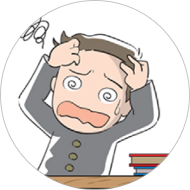Learning Difficulties
Sleep dysfunctions in children can significantly impact their cognitive development and learning abilities due to the vital role the quantity of REM sleep plays in brain growth and Development particularly in the first four years of LIFE. REM Sleep is especially critical in memory consolidation, and emotional regulation. Here are some key ways these sleep dysfunctions can cause learning difficulties:
- Impaired Memory and Cognitive Function
- Reduced Problem-Solving and Critical Thinking
- Behavioral and Emotional Dysregulation
- Impact on Physical and Neurological Development
- Learning Disabilities and ADHD Overlap with Learning Disorders
By addressing sleep dysfunctions, whether through behavioral interventions or medical treatment, the cognitive, emotional, and physical deficits that hinder a child’s learning can often be improved, leading to better academic performance.
1. Impaired Memory and Cognitive Function
- Memory Consolidation: Sleep is essential for solidifying information learned during the day. Inadequate sleep, especially disruptions in REM sleep, impairs memory consolidation, making it harder for children to retain and recall learned information.
- Attention and Focus: Sleep deprivation reduces attention span and the ability to focus on tasks, making it difficult for children to engage in classroom learning and follow instructions.
2. Reduced Problem-Solving and Critical Thinking
- Cognitive Flexibility: Insufficient sleep limits a child’s ability to think creatively and solve problems. They may struggle with tasks that require reasoning or critical thinking, which are essential for learning math, science, and other subjects.
- Processing Speed: Sleep disturbances can slow down processing speed, affecting how quickly and accurately children can complete tasks or respond to questions.
3. Behavioral and Emotional Dysregulation
- Mood Disorders: Poor sleep often leads to irritability, anxiety, or even depression in children, which can distract them from learning and affect social interactions in school.
- Hyperactivity and Impulsivity: Sleep disorders, such as sleep apnea, can lead to hyperactive behaviors similar to ADHD. These behaviors make it difficult for children to sit still, pay attention, and complete schoolwork.
4. Impact on Physical and Neurological Development
- Growth and Brain Development: Sleep is crucial for physical growth and brain development. Sleep dysfunctions during critical growth periods can disrupt the development of neural circuits involved in learning and cognitive function.
- Synaptic Plasticity: Sleep allows the brain to strengthen neural connections (synaptic plasticity), which is necessary for learning new skills. Disrupted sleep can impair this process, leading to difficulties in acquiring new knowledge.
5. Learning Disabilities and ADHD Overlap with Learning Disorders:
Many children with sleep disorders also exhibit learning disabilities or ADHD. This overlap suggests that sleep disturbances can exacerbate or mimic the symptoms of these conditions, further complicating learning.

